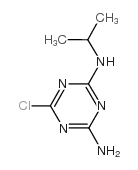Characterization of bacterial diversity in an atrazine degrading enrichment culture and degradation of atrazine, cyanuric acid and biuret in industrial wastewater.
Anirban Dutta, Venugopal Vasudevan, Lata Nain, Neera Singh
Index: J. Environ. Sci. Health B 51 , 24-34, (2015)
Full Text: HTML
Abstract
An enrichment culture was used to study atrazine degradation in mineral salt medium (MSM) (T1), MSM+soil extract (1:1, v/v) (T2) and soil extract (T3). Results suggested that enrichment culture required soil extract to degrade atrazine, as after second sequential transfer only partial atrazine degradation was observed in T1 treatment while atrazine was completely degraded in T2 and T3 treatments even after fourth transfer. Culture independent polymerase chain reaction-denaturing gradient gel electrophoresis (PCR-DGGE) technique confirmed selective enrichment of genus Bacillus along with Pseudomonas and Burkholderia. Degradation of atrazine/metabolites in the industrial wastewater was studied at different initial concentrations of the contaminants [wastewater-water (v/v) ratio: T1, 1:9; T2, 2:8; T3, 3:7; T4, 5:5 and T5, undiluted effluent]. The initial concentrations of atrazine, cyanuric acid and biuret ranged between 5.32 and 53.92 µg mL(-1), 265.6 and 1805.2 µg mL(-1) and 1.85 and 16.12 µg mL(-1), respectively. The enrichment culture was able to completely degrade atrazine, cyanuric acid and biuret up to T4 treatment, while no appreciable degradation of contaminants was observed in the undiluted effluent (T5). Inability of enrichment culture to degrade atrazine/metabolites might be due to high concentrations of cyanuric acid. Therefore, a separate study on cyanuric acid degradation suggested: (i) no appreciable cyanuric acid degradation with accumulation of an unidentified metabolite in the medium where cyanuric acid was supplemented as the sole source of carbon and nitrogen; (ii) partial cyanuric acid degradation with accumulation of unidentified metabolite in the medium containing additional nitrogen source; and (iii) complete cyanuric acid degradation in the medium supplemented with an additional carbon source. This unidentified metabolite observed during cyanuric acid degradation and also detected in the enrichment culture inoculated wastewater samples, however, was degraded up to T4 treatments and was persistent in the T5 treatment. Probably, accumulation of this metabolite inhibited atrazine/cyanuric acid degradation by the enrichment culture in undiluted wastewater.
Related Compounds
| Structure | Name/CAS No. | Molecular Formula | Articles |
|---|---|---|---|
 |
Biuret
CAS:108-19-0 |
C2H5N3O2 | |
 |
2-Amino-4-isopropylamino-6-chlorotriazin
CAS:6190-65-4 |
C6H10ClN5 |
|
Protein enrichment of an Opuntia ficus-indica cladode hydrol...
2015-03-30 [J. Sci. Food Agric. 95(5) , 1094-102, (2015)] |
|
Validation of a rapid method of analysis using ultrahigh-per...
2014-12-19 [J. Chromatogr. A. 1373 , 106-13, (2014)] |
|
Immune activity of sweet potato (Ipomoea batatas L.) glycopr...
2015-06-01 [Food Funct. 6 , 2026-32, (2015)] |
|
Generation of semicarbazide from natural azine development i...
2015-01-01 [Food Addit. Contam. Part A. Chem. Anal. Control. Expo. Risk Assess. 32 , 1416-30, (2015)] |
|
Minipool caprylic acid fractionation of plasma using disposa...
2015-02-01 [PLoS Negl. Trop. Dis. 9(2) , e0003501, (2015)] |